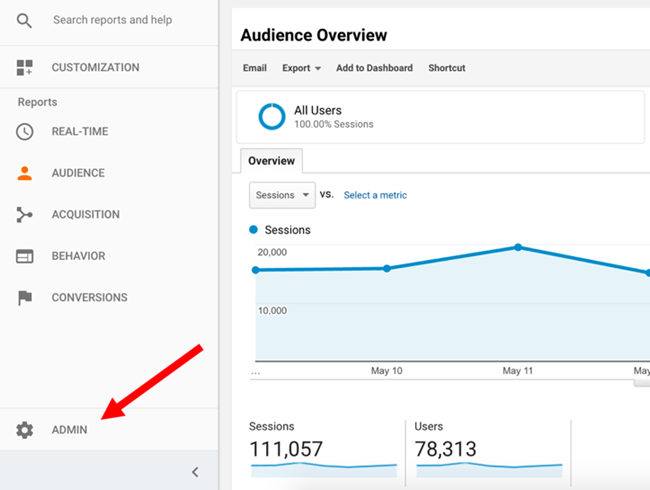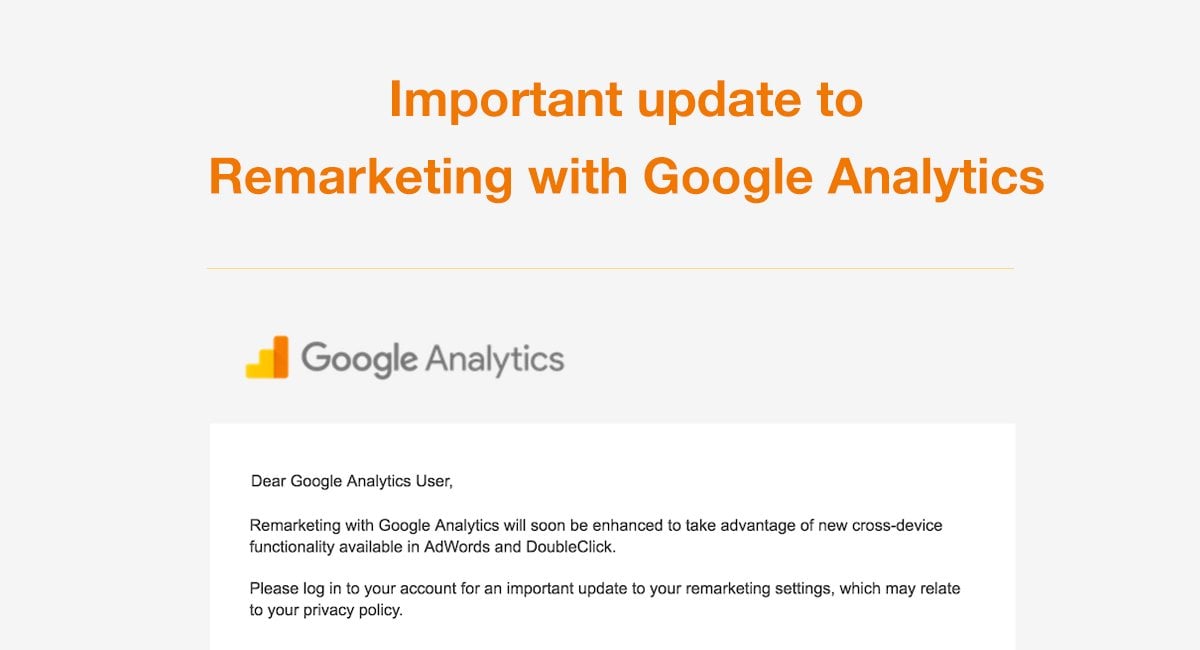Maximizing Your ROI with Remarketing In Google Analytics
Wiki Article
Using Remarketing in Google Analytics: A Comprehensive Overview
Using remarketing in Google Analytics offers businesses a calculated side in reaching out to possible customers. This overview will certainly lose light on the essential steps involved in taking advantage of the full possibility of remarketing in Google Analytics, leading to boosted marketing end results.Comprehending Remarketing in Google Analytics
Remarketing in Google Analytics permits businesses to strategically target customers who have actually previously engaged with their internet site or mobile app. By leveraging information from Google Analytics, businesses can develop customized remarketing lists based upon individual habits, such as pages gone to, actions taken, or certain goals accomplished. This powerful tool makes it possible for businesses to re-engage with individuals who have revealed rate of interest in their solutions or products, eventually boosting the likelihood of conversion.Understanding the different sorts of remarketing techniques is important for an effective project - What Is “Remarketing” In Google Analytics?. Google Analytics supplies different alternatives, including basic remarketing, vibrant remarketing, and remarketing checklists for search ads (RLSA) Each kind serves an one-of-a-kind function and can be tailored to meet certain advertising and marketing objectives
Additionally, analyzing the efficiency of remarketing campaigns is necessary for maximizing results. Google Analytics gives beneficial insights into the effectiveness of different remarketing strategies, permitting organizations to make data-driven choices and improve their targeting method. By continually changing and monitoring remarketing initiatives based upon analytics data, services can take full advantage of ROI and drive success in their advertising initiatives.
Setting Up Remarketing Projects

After establishing target market lists, the next step is to link Google Analytics with Google Ads. By connecting these 2 systems, companies can seamlessly transfer audience checklists from Google Analytics to Google Ads for remarketing objectives. This integration permits even more precise targeting and better campaign performance.
When the accounts are connected, businesses can develop remarketing projects in Google Advertisements using the audience provides previously specified in Google Analytics. These campaigns can be tailored with certain advertisement creatives, messaging, and bidding approaches to properly re-engage with past site visitors and drive conversions. By following these steps, services can leverage the power of remarketing to enhance their advertising initiatives and increase ROI.
Using Audience Segmentation Techniques

Predefined segments in Google Analytics enable you to rapidly assess usual target market classifications like new users, returning customers, or customers that completed a specific goal on your web site. Custom segments, on the various other hand, allow you to develop distinct segments based on specific criteria that are essential to your company purposes. Dynamic remarketing listings immediately change based on individual actions, showing personalized ads to users that have actually connected with your site in particular methods.
Studying Remarketing Performance Metrics
Upon examining the effectiveness of remarketing projects in Google Analytics, the evaluation of crucial performance metrics gives useful understandings into audience engagement and conversion prices. By diving into metrics such as click-through rates (CTR), conversion prices, expense per acquisition (CPA), and return on advertisement spend (ROAS), marketing experts can assess the success of their remarketing efforts. CTR suggests the percentage of users who clicked on the ad after viewing it, mirroring the advertisement's significance and charm. Conversion prices gauge the portion of users who finished a desired activity, such as making a purchase, after clicking the advertisement. CPA discloses the average expense sustained for each and every conversion, helping evaluate project productivity. ROAS, on the various other hand, quantifies the income generated for each dollar spent on advertising. Analyzing these metrics makes it possible for marketing experts to optimize projects, fine-tune target market targeting, and allocate budgets efficiently to enhance general remarketing efficiency.Maximizing Remarketing Techniques
When refining remarketing methods in Google Analytics, focusing on audience segmentation is extremely important for attaining campaign success. By splitting your audience right into specific segments based on their habits, demographics, or passions, you can tailor your advertisements better to every group. This targeted technique raises the chance of involving users that have actually already revealed passion in your product description and services, resulting in greater conversion prices.One more critical aspect of optimizing remarketing strategies is constantly testing and refining your campaigns (What Is “Remarketing” In Google Analytics?). A/B screening various ad creatives, messaging, or offers can help you recognize what resonates ideal with your audience and drives the most conversions. By assessing the performance of these examinations in Google Analytics, you can make data-driven choices to enhance your remarketing initiatives further
Additionally, leveraging dynamic remarketing can significantly boost your campaign results. This function permits you to show customized ads to customers based upon their previous interactions with your website, showcasing services or products they have click this site formerly watched. By delivering customized material to customers based upon their interests and behaviors, vibrant remarketing can aid enhance interaction and drive conversions.
Conclusion
To conclude, using remarketing in Google Analytics is a calculated technique to target customers that have previously involved with a website. By producing tailored audience checklists and utilizing audience division methods, companies can maximize remarketing advocate enhanced conversion prices. Analyzing performance metrics and continuously optimizing methods are essential for maximizing the effectiveness of remarketing initiatives.Google Analytics provides different alternatives, consisting of standard remarketing, vibrant remarketing, and remarketing checklists for search ads (RLSA)After establishing up audience lists, the following step is to connect Google Analytics with Google Ads. By connecting these two platforms, companies can flawlessly transfer target market listings from Google Analytics to Google Ads for remarketing objectives.When the accounts are connected, services look at here can produce remarketing campaigns in Google Advertisements using the audience details formerly specified in Google Analytics.When refining remarketing methods in Google Analytics, concentrating on target market segmentation is vital for attaining project success.
Report this wiki page